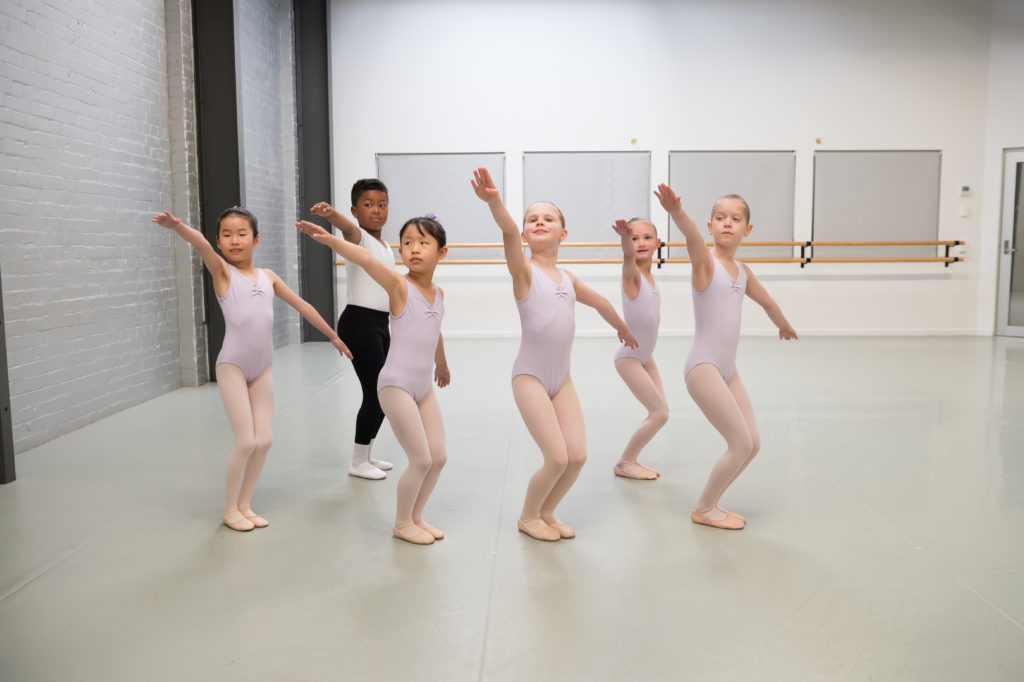Parents often feel uncertain when choosing the right dance class for kids nowadays. Each child learns differently based on their age, confidence, and interest in physical movement, which can change quickly as they grow. Matching a child's energy level and age group to the right class creates a positive experience that supports both learning and enjoyment.
As children grow, the way they engage with movement and instructions also changes. Some enjoy playful interaction while others prefer focused learning, so it is essential to pick dance classes for kids that support both creativity and discipline. This blog shares helpful tips to guide parents when choosing age-suitable options that encourage confidence, enjoyment, and movement.
Understanding Age Stages in Dance Classes for Kids
Children learn and move in different ways as they grow. Choosing dance classes for kids helps them have fun and learn new skills.
Preschool (2½ - 4 years)
At this stage, movement is all about fun, imagination, and basic rhythm. Dance classes for kids with stories, songs, or props keep children engaged, while simple steps and repetition help them explore safely and develop early coordination and confidence.
Young Children (5 - 6 years)
Dance classes for kids aged five to six begin learning step names and short routines. Gradual structure introduces memory, coordination, and basic technique while keeping lessons fun. This age is perfect for building confidence and learning to work in a group.
Preteens (7 - 11 years)
Preteens can handle longer lessons and more complex routines. Dance focuses on technical skills, strength, and coordination while still allowing space for creativity and personal expression. Structured training helps them develop discipline alongside individuality.
Teenagers (12+ years)
Teenagers thrive when they can explore personal expression and refine technique. Classes focus on advanced skills, performance preparation, and emotional expression while instructors guide discipline and support independence and teamwork.
Ballet Dance Classes for Early Learners
Ballet is one of the most common entry points for younger dancers because it builds strong foundations in posture and movement. Dance classes for kids aged three to six often enjoy the calm, focused rhythm of ballet, which teaches them how to follow instructions while keeping balance. It supports early coordination, introduces musical timing, and gives children a safe space to move with grace.
Instructors usually teach simple steps such as pliés, jumps, and walking on tiptoes, which slowly help children build control and awareness of how their bodies move. Props like scarves, wands, or fairy wings can keep sessions interesting and help children stay involved in each activity. Ballet also supports teamwork, patience, and focus, mainly when lessons include short routines and easy-to-follow visual guidance.
For this age group, parents should choose ballet dance classes for kids that focus on building confidence without placing too much emphasis on perfection or performance. The environment should support slow progress, with instructors offering frequent praise and demonstrations. These early ballet sessions help set the tone for healthy movement habits and a love for music-based learning.
Jazz Dance Classes for Growing Energy Levels
Jazz is ideal for children who enjoy fast music and like to express themselves through energetic movement. As children grow and develop stamina, jazz becomes a good match because it mixes rhythm, coordination, and playful routines. Children aged six to ten often respond well to the upbeat tempo, short routines, and fun footwork.
Jazz teaches quick changes in direction, arm and leg coordination, and expressive moves that help children become more aware of their bodies. It also encourages a sense of musicality and personal style, as children learn to perform steps in time with popular tunes. While structured, jazz still leaves room for creativity, making it both engaging and physically active.
Parents should look for jazz dance classes for kids that balance basic technique with energy-driven sequences that keep children moving. Programmes for this age group often include warm-ups, repeated drills, and a short choreography that changes each term. For families looking to introduce fun and skill together, jazz offers an exciting path to learning through movement.
Hip Hop Dance Classes for Expressive Kids
Hip hop suits children who enjoy rhythm and want to show their personality through movement. It helps build confidence and gives children a fun way to explore their style while staying active. Suitable from around age seven, hip hop includes breaking, popping, and freestyle moves that support body strength and control.
Because of its playful nature, hip hop can also help shy children become more outgoing, especially in group sessions. Dancers work on isolations, sharp movements, and memory, which sharpens focus while encouraging group cooperation. Unlike traditional dance forms, hip hop gives more freedom to interpret the music, which many children find refreshing.
Parents looking for hip hop dance classes for kids in Wellington should consider options that offer structured instruction with time for creative exploration. Instructors should explain moves clearly, model combinations, and guide children through group or solo sections. With the right approach, hip hop becomes a valuable outlet for energy and self-expression.
Contemporary Dance Classes for Preteens
Contemporary dance encourages emotional expression through movement, which makes it a good choice for preteens dealing with changes in mood and identity. Children aged around ten to twelve often look for dance styles that focus on feeling, meaning, and personal storytelling, rather than just technique. Contemporary blends ballet, jazz, and modern movement, supporting flow, creativity, and expression.
Unlike faster styles, contemporary dance classes for kids focus on breathing, slowing down, and smooth movements to help children control their movement. It teaches stretching, balance, and floor work to build strength and flexibility. Many preteens enjoy contemporary music because it lets them move more calmly while learning to show feelings without words.
Parents should choose classes with supportive environments where instructors promote creativity rather than just performance. Programmes designed for this age group often include improvisation and guided storytelling through movement. Contemporary dance helps children build confidence by encouraging them to trust their physical instincts.
Lyrical Dance Classes for Emotional Growth
Lyrical dance draws on steps from ballet and contemporary to help children express emotions through soft, flowing movements. It works well for those who enjoy telling stories with music and feel connected to the songs they dance to. Often starting from age nine, lyrical dance teaches smooth steps, musical feeling, and how to express emotion through movement.
Children learn to use their arms, facial expressions, and controlled steps to reflect emotions in the music. Classes often focus on balance, leg extensions, and graceful transitions, which require focus and body awareness. This makes lyrical dance ideal for children looking to deepen their connection to movement and develop emotional understanding.
When choosing lyrical dance classes for kids, parents should look for programmes that provide structured guidance while encouraging emotional openness. Instructors should select music thoughtfully and offer choreographies that are age-appropriate and meaningful. Lyrical dance supports emotional health while also strengthening technique and coordination.
Acro Dance Classes for Strength and Balance
Acro dance combines gymnastics with dance classes for kids, helping them build control over their bodies and feel more confident. It is a good fit for children who enjoy tumbling, have flexible bodies, or like a physical challenge. Acro often suits children aged six and up who want to get stronger while learning fun moves.
Instructors teach rolls, handstands, cartwheels, and transitions that flow into dance movements, creating a seamless blend of acrobatics and rhythm. Sessions include conditioning exercises, safety spotting, and repetition of techniques to build core strength. Children develop awareness of how to move safely while gaining confidence in trying new physical tasks.
Parents looking for beginner acro dance for kids in NZ should seek studios with trained staff in both dance and gymnastics. Safety measures such as soft flooring, equipment, and clear supervision are important for effective learning. Acro dance offers a balanced mix of excitement, challenge, and performance, especially for active learners.
Musical Theatre Classes for Creative Performance
Musical theatre mixes drama, singing, and dance, making it a good choice for children who like performing. Children aged 7 and above often enjoy these sessions because they include many fun activities, movement, and stories.Each class helps children gain confidence by teaching timing, clear speech, and easy stage movements.
Instead of focusing on just one skill, musical theatre includes acting games and simple group dances based on themes or characters. Children learn how to follow stage directions, play different roles, and remember short routines with both speech and movement. These lessons help improve speaking skills, body awareness, and confidence when performing in front of others.
When selecting musical theatre dance classes for kids, parents should look for instructors with experience in stage performance. A supportive group dynamic is important, as children often perform together and rely on each other during shows. Musical theatre encourages creativity while strengthening communication and body language skills.
Petite Dance Classes for Preschool Kids
Petite dance classes are for children aged three to five and offer a fun, gentle introduction to movement. Sessions often include simple ballet and jazz steps taught with stories, songs, and props to keep things fun. This helps young children listen, follow rhythm, and enjoy dancing with others in a group.
Movements are soft and repeated, helping children learn rhythm and how to control their bodies without needing to remember long routines. Simple steps like skipping, pointing toes, and holding arms in place become easy over time. Fun items such as ribbons, scarves, or soft toys help keep children interested while learning.
Parents choosing petite dance classes should look for calm settings where instructors use encouragement and creative activities. Sessions should help children build confidence and learn basic rhythm without focusing on perfect technique. These early dance experiences often shape how children feel about joining in and learning with others.
Supporting Kids Through Dance Growth
Dance classes for kids help grow by building strength, improving timing, and helping them understand their emotions. Every dance style offers something different, from learning good posture and rhythm to building teamwork and confidence. Parents can support learning by choosing dance styles that match their child's interests and letting progress unfold step by step.
Many families explore options when searching for the best kids dance classes in Wellington that align with their personalities, learning pace, and energy levels. Wellington Dance Academy offers movement-focused sessions with age-appropriate content that foster healthy growth, emotional development, and creativity. Each style gives children different tools to move with joy and confidence.

